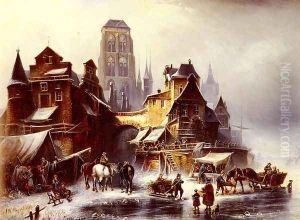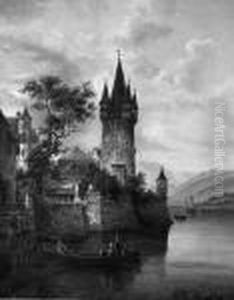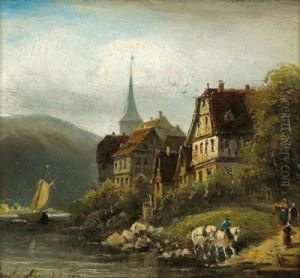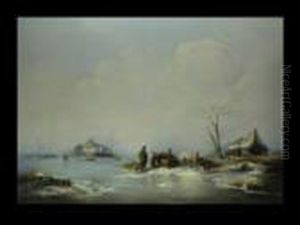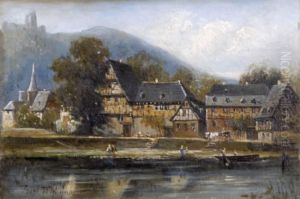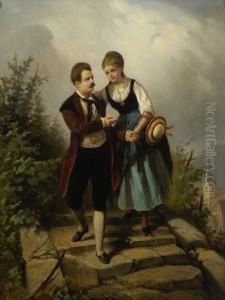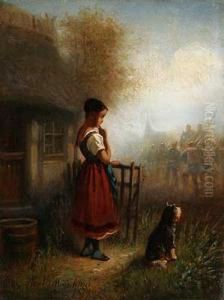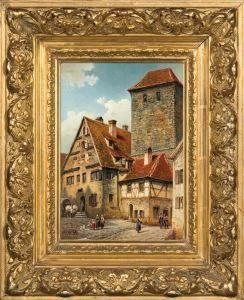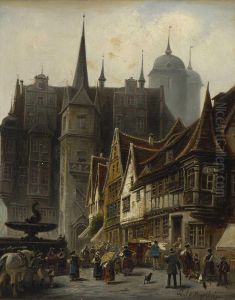Paul Wilhelm Meyerheim Paintings
Paul Wilhelm Meyerheim was a distinguished German painter and academic born on July 13, 1842, in Berlin. He was part of a family deeply rooted in the arts; his father, Friedrich Eduard Meyerheim, was also a painter, and this background nurtured his artistic talents from an early age. Meyerheim's education in art began under the guidance of his father and continued at the Prussian Academy of Arts, where he honed his skills and developed his unique style. He became well-known for his exceptional ability to depict animals, particularly in industrial and technological settings, which was quite innovative for his time.
Meyerheim's career was marked by his fascination with the interface of animals, humans, and technology. He gained considerable acclaim for his detailed and lifelike portrayal of animals, which he often depicted within the context of the evolving industrial landscape of the 19th century. This thematic focus was not only unique but also reflected the broader societal changes and technological advancements of the era. Besides animal paintings, Meyerheim also produced genre scenes, historical works, and landscapes, showcasing his versatility as an artist.
He was a respected member of the Berlin Academy and received numerous honors throughout his career, reflecting the high esteem in which he was held by his contemporaries. Meyerheim's influence extended beyond his own works through his role as a teacher, where he imparted his knowledge and passion for art to the next generation of artists. His legacy is preserved in the collections of major museums and galleries, where his masterpieces continue to be admired for their technical precision and emotional depth. Paul Wilhelm Meyerheim passed away on September 14, 1915, in Berlin, leaving behind a body of work that remains significant in the annals of German art history.
